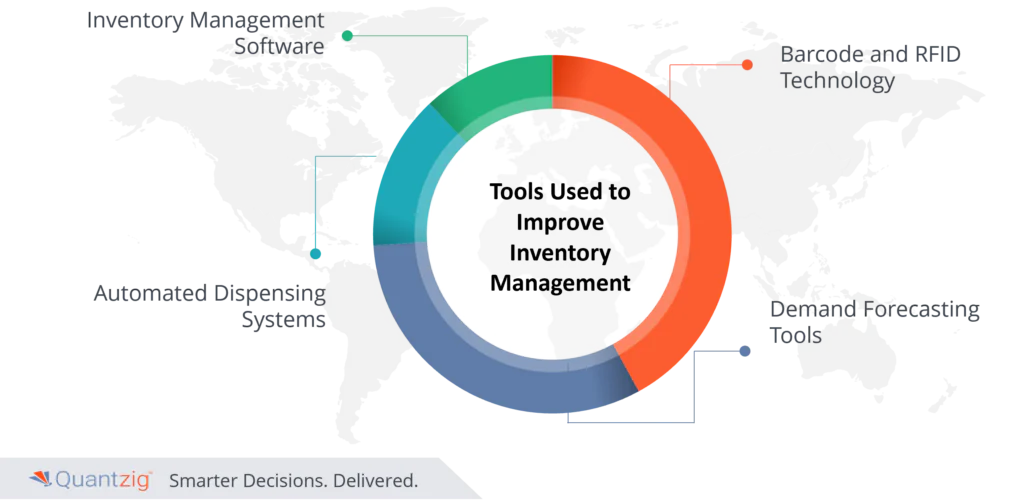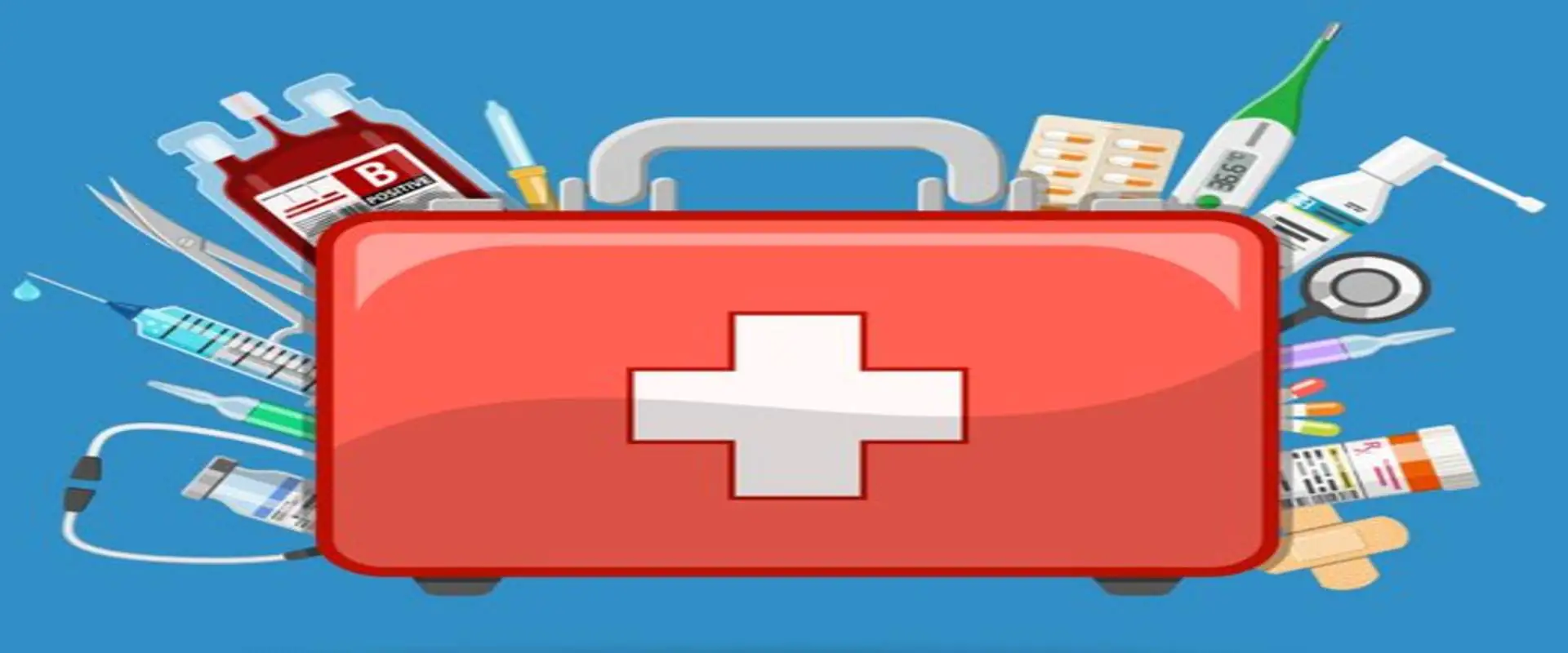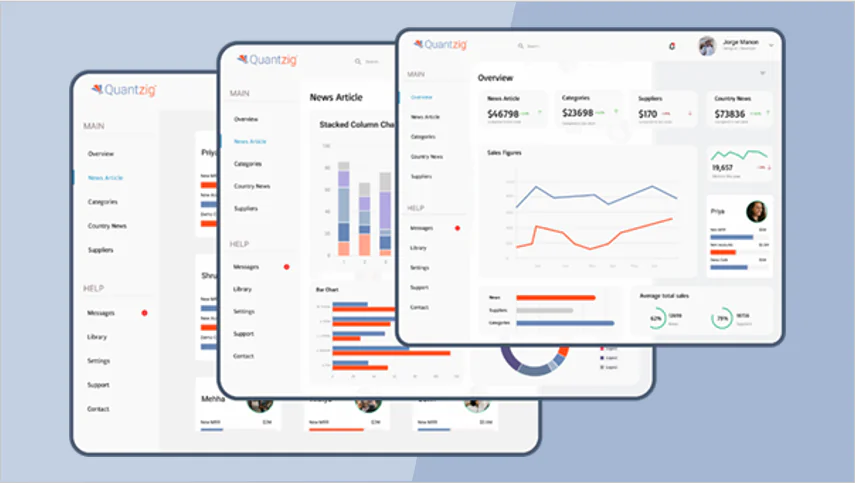Inventory management in healthcare oversees the flow of medical equipment and pharmaceuticals within facilities. It ensures the right items are available, reducing waste and optimizing patient care. The main objective is to balance adequate stock levels while avoiding excess inventory that ties up capital, achievable through perpetual and periodic inventory methods and specialized software solutions.
These systems should support multiple locations, integrate with enterprise resource planning software, and enhance demand planning and procurement. Additionally, they should enable efficient customer purchasing and delivery through strong communication features. Managing contract compliance with bulk purchasing can save costs, while prioritizing the protection of medical instruments through visual tracking ensures accuracy in inventory management.
Book a demo to experience the meaningful insights we derive from data through our analytical tools and platform capabilities.
Request a demoTable of Contents
What is Healthcare Inventory Management?
Healthcare Inventory Management refers to the systematic tracking, monitoring, and optimization of medical supplies, pharmaceuticals, and equipment to ensure efficiency, cost control, and patient safety. It helps healthcare providers maintain optimal stock levels, reduce waste, prevent shortages, and streamline procurement processes. With digital solutions like ERP systems and automation, healthcare organizations can enhance accuracy, compliance, and operational efficiency.
Key Aspects of Healthcare Inventory Management:
- Optimized Stock Levels: Ensures essential medical supplies are available without overstocking.
- Cost Efficiency: Reduces wastage and lowers procurement costs through better planning.
- Automation & Tracking: Uses ERP and AI-driven systems for real-time inventory monitoring.
- Regulatory Compliance: Helps maintain adherence to healthcare standards and safety regulations.
- Supply Chain Visibility: Enhances transparency across procurement, storage, and distribution.
- Improved Patient Care: Ensures timely availability of critical medicines and equipment.
Importance of Efficient Healthcare Inventory Management
Effective inventory management is crucial for businesses aiming to streamline operations and control costs. By implementing the best inventory management system, companies can minimize risks, reduce storage expenses, and enhance customer satisfaction. Let’s explore key benefits:

- Risk Minimization: A robust inventory system optimizes order quantities and balances storage costs, reducing financial risks associated with overstocking or understocking.
- Cost Efficiency: The best inventory management solutions calculate the Economic Order Quantity (EOQ) to determine cost-effective ordering strategies, minimizing warehousing expenses.
- Accurate Sales Projections: Seamless integration with POS systems enables precise sales forecasts, reducing the risk of overinvesting in slow-moving products.
- Customer Satisfaction: Real-time visibility into stock levels ensures prompt order fulfillment, fostering customer loyalty and repeat business.
- Operational Efficiency: From sales forecasting to supply chain and warehouse management, an advanced inventory management system streamlines processes, boosting overall productivity.
In conclusion, adopting the best inventory management system enables businesses to maintain optimal stock levels, improve operational efficiency, and drive growth through cost-effective and customer-centric strategies.
Healthcare Inventory Management Techniques to Cut Down Cost
Advancements in Health IT are driving the adoption of healthcare inventory management systems to streamline medical supply chain management and reduce costs. By leveraging real-time inventory tracking in healthcare, hospitals can optimize stock levels, minimize waste, and ensure essential supplies are available for patient care. The integration of medical inventory software and automated inventory management in healthcare enables better hospital inventory optimization, improving operational efficiency and patient outcomes.
Here are five tips for healthcare companies to improve inventory management techniques and reduce their overall costs:
| Strategy | Description |
|---|---|
| 1. Collect Data from the Supply Chain | Integrating supply chain data allows healthcare organizations to optimize inventory management, linking practices to patient outcomes for cost savings. |
| 2. Clarify Responsibilities | Clearly define staff roles in inventory management, from cleaning to ordering, to ensure smooth and effective operations. |
| 3. Organize the Supply Room | A well-organized supply room minimizes issues like lost revenue and misplaced items, improving efficiency by prioritizing soon-to-expire products. |
| 4. Adopt a Lean Strategy | By understanding costs linked to product movement and expiration, healthcare organizations can implement a lean supply chain, ensuring timely availability. |
| 5. Standardization and Product Rationalization | Reducing product variety and standardizing items simplifies procurement, increases discounts, and eliminates redundancies, leading to cost savings. |
These strategies streamline inventory management, improve patient care, and optimize costs in healthcare organizations.
Types of Hospital Management Inventory Techniques:
Hospital Management Inventory is essential for ensuring medical facilities have the right supplies and medications on hand. Key techniques include:
- Just-In-Time (JIT) Inventory: This method maintains minimal stock by ordering supplies as needed, reducing storage costs and expiration risks. It relies on accurate demand forecasting and reliable suppliers.
- ABC Analysis: Items are categorized into three groups based on value and usage, helping prioritize critical inventory items.
- Par Level System: Establishes minimum and maximum inventory levels to prevent stockouts and overstocking.
- First-In, First-Out (FIFO): Ensures older items are used first, minimizing waste from expired products.
- Vendor-Managed Inventory (VMI): Suppliers monitor and replenish inventory, optimizing levels based on real-time demand.
- Technology-Driven Management: Uses advanced software like RFID for real-time tracking, enabling efficient inventory processes.
Combining these strategies helps balance supply availability and cost-effectiveness in healthcare settings.
Experience the advantages firsthand by testing a customized complimentary pilot designed to address your specific requirements. Pilot studies are non-committal in nature.
Request a pilotTools Used to Improve Healthcare Inventory Management:
Inventory management in healthcare relies on advanced tools and technologies to ensure optimal control over medical supplies and medications. Several tools and technologies have revolutionized inventory innovations in the healthcare industry. RFID (Radio-Frequency Identification) technology enables real-time tracking of medical supplies, reducing the likelihood of stockouts or overstocking. Inventory management software offers features like demand forecasting, order automation, and analytics to optimize stock levels and reduce costs. Moreover, integrating Electronic Health Records (EHR) with inventory systems can enhance data accuracy and streamline procurement processes.
Here are four key tools used to improve inventory management in healthcare:

Types of Healthcare Inventory Management
Keeping track of medical supplies is crucial in healthcare. Here are two main approaches:
- Manual counting (periodic inventory): This traditional method involves physically counting supplies at set times (weekly, monthly). While simpler for smaller facilities, it’s time-consuming and prone to errors.
- Software-based tracking (perpetual inventory): This method uses software to continuously update inventory levels as items are added or removed. This ensures accurate stock levels, reduces the risk of expired or damaged supplies, and frees up staff time.
While perpetual inventory systems have a higher upfront cost, they offer long-term benefits:
- Reduced costs: Improved accuracy minimizes waste and unnecessary purchases.
- Improved efficiency: Staff can focus on patient care instead of manual counting.
- Enhanced patient care: Clinicians have the supplies they need to deliver quality care.
Here are additional tips for effective healthcare inventory management:
- Streamline your stock: Eliminate unnecessary duplicate items.
- Implement labeling: Use tags or barcodes for easy tracking.
- Analyze usage patterns: Understand department-specific needs to optimize stock levels.
- Consider a dedicated inventory management system: Specialized software can further streamline your processes.
Using QZ’s healthcare inventory management feature: How to add products and keep track of items?
Quantzig’s Inventory Management Feature is a tool or functionality offered by Quantzig, a data analytics and consulting firm, that enables businesses to effectively add products to their inventory and keep track of items throughout their lifecycle. Here’s how it works:
1. Adding Products to Inventory:
This feature allows businesses to input detailed product information, including name, description, SKU, quantity, cost, and supplier details. Products can be added individually or in bulk via a user-friendly interface, ensuring an up-to-date inventory catalog for better stock management.
2. Tracking Items in Inventory:
Once products are added, healthcare inventory software businesses can track each item from procurement to sale. This feature enables real-time monitoring of inventory levels, stock quantities, locations, and movement history. It may include barcode scanning or RFID tagging for efficient tracking, with alerts set for reorder points to prevent stockouts and overstocking.
3. Additional Features and Benefits:
Quantzig’s Inventory Management Feature offers demand forecasting, integration with POS and ERP systems, and analytics for inventory performance. These capabilities help businesses optimize inventory processes, improve efficiency, reduce carrying costs, and enhance customer satisfaction through consistent product availability.
Quantzig’s medical inventory management system provides businesses with a comprehensive solution for adding products to their inventory and effectively tracking items throughout their lifecycle, thereby optimizing inventory management and improving overall business performance.
Get started with your complimentary trial today and delve into our platform without any obligations. Explore our wide range of customized, consumption driven analytical solutions services built across the analytical maturity levels.
Start your trialConclusion
In conclusion, effective medical supply chain management is crucial for cost reduction in medical facilities while maintaining high patient care standards. By implementing strategies like demand forecasting, just-in-time inventory, ABC analysis, and supplier collaboration, healthcare providers can achieve inventory optimization in healthcare. These practices enhance inventory control in hospitals, reduce waste, and alleviate the financial burden of excessive inventory.
Additionally, adopting automated inventory solutions for healthcare and improving healthcare inventory tracking can significantly reduce healthcare inventory costs. Utilizing inventory management software for hospitals ensures essential medical supplies are consistently available and improves hospital inventory accuracy. By adhering to best practices for healthcare inventory and leveraging a robust inventory management system for healthcare providers, organizations can enhance operational efficiency and uphold their core mission of delivering quality care. Ultimately, well-executed inventory management is vital for the sustainability and success of large healthcare organizations.




